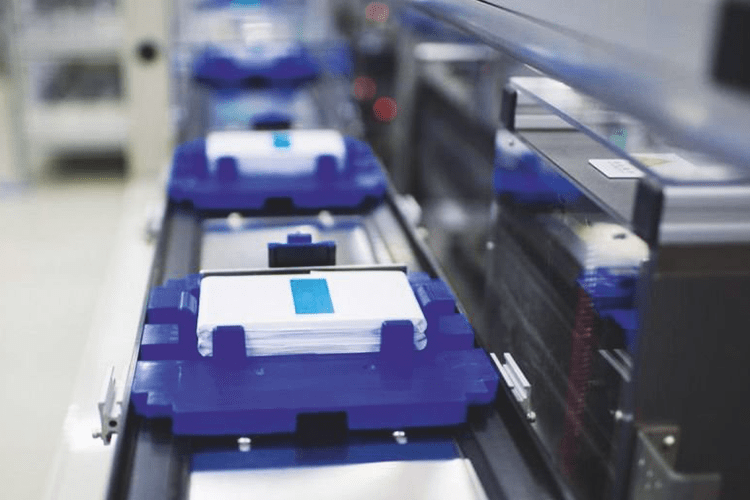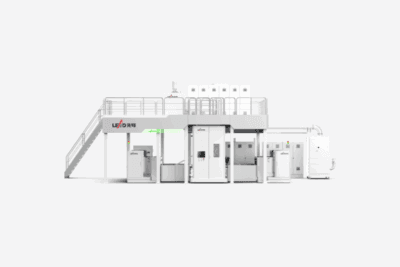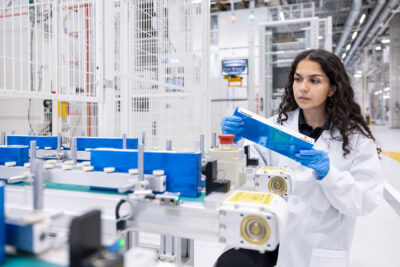One third of the world’s EV batteries come from CATL
According to an analysis by the market research company SNE Research, electric vehicle batteries with a total capacity of 203.4 GWh were installed worldwide in the first half of 2022. The leading supplier was CATL with 70.9 GWh or a market share of 34.8 per cent.
The gap to the second place is significant: LG Energy Solution follows CATL with a share of 14.4 per cent, ahead of BYD in third place with a share of 11.8 per cent. However, this also means that exactly 61 per cent of all electric car batteries come from these three manufacturers.
All other battery manufacturers only have a single-digit market share. Panasonic, with its major customer Tesla, is ranked fourth by SNE Research with a market share of 9.6 per cent. This is followed by another big step to SK On (6.5 per cent, before the field becomes somewhat narrower again: Samsung SDI comes in at 4.9 per cent, CALB from China at 4.1 per cent. VW partner Gotion High-Tech follows with 2.9 per cent, ahead of Sunwoda (1.5 per cent) and SVOLT Energy (1.3 per cent). All other manufacturers add up to 8.2 per cent.
| Manufacturer | Capacity H1 2022 (in GWh) | Market share (in %) | Rank |
|---|---|---|---|
| CATL | 70,9 | 34,8 | 1 |
| LG Energy Solution | 26,2 | 14,4 | 2 |
| BYD | 24,0 | 11,8 | 3 |
| Panasonic | 19,5 | 9,6 | 4 |
| SK On | 13,2 | 6,5 | 5 |
| Samsung SDI | 10,0 | 4,9 | 6 |
| CALB | 8,4 | 4,1 | 7 |
| Gotion High-Tech | 5,8 | 2,9 | 8 |
| Sunwoda | 3,1 | 1,5 | 9 |
| SVOLT | 2,6 | 1,3 | 10 |
Source: SNE Research
The half-year evaluation clearly shows the pace of growth in the battery industry: In 2021, CATL had built 96.7 GWh of capacity (market share 32.6 per cent) and this year already reached 70.9 GWh in only six months. BYD also made significant gains from a market share of 8.8 per cent in 2021 in just one half of the year – it was even only 6.8 per cent in the first half of 2021. CALB (2.7 to 4.1 per cent) and Gotion (2.1 to 2.9 per cent) also made gains, albeit at a different level.
However, other companies were not able to grow as fast or do not yet have new, important factories in operation. LGES, for example, has lost significant market share; in 2021 as a whole, SNE Research had still calculated 20.3 per cent market share – instead of 14.4 per cent in H1 2022. LGES has hardly gained any production capacity: 27.3 GWh in H1 2021, now 29.2 GWh. CATL, on the other hand, has expanded from 32.9 to 70.9 GWh, BYD from 7.9 to 24.0 GWh. And it is not only the Chinese who are expanding: SK On also scaled up from 6.2 to 13.2 GWh, Samsung SDI from 6.6 to 10.0 GWh.
Panasonic also went down, from 12.2 to 9.6 per cent – up from 15 per cent in the first half of 2021. At the bottom of the top ten, AESC also failed to get above one per cent, with 1.4 per cent in 2021. Instead of AESC, SNE Research has now listed Sunwoda, and AESC is now only included in the “other” category.
With reporting by Sebastian Schaal, Germany.
sneresearch.com (in Korean), cnevpost.com





2 Comments